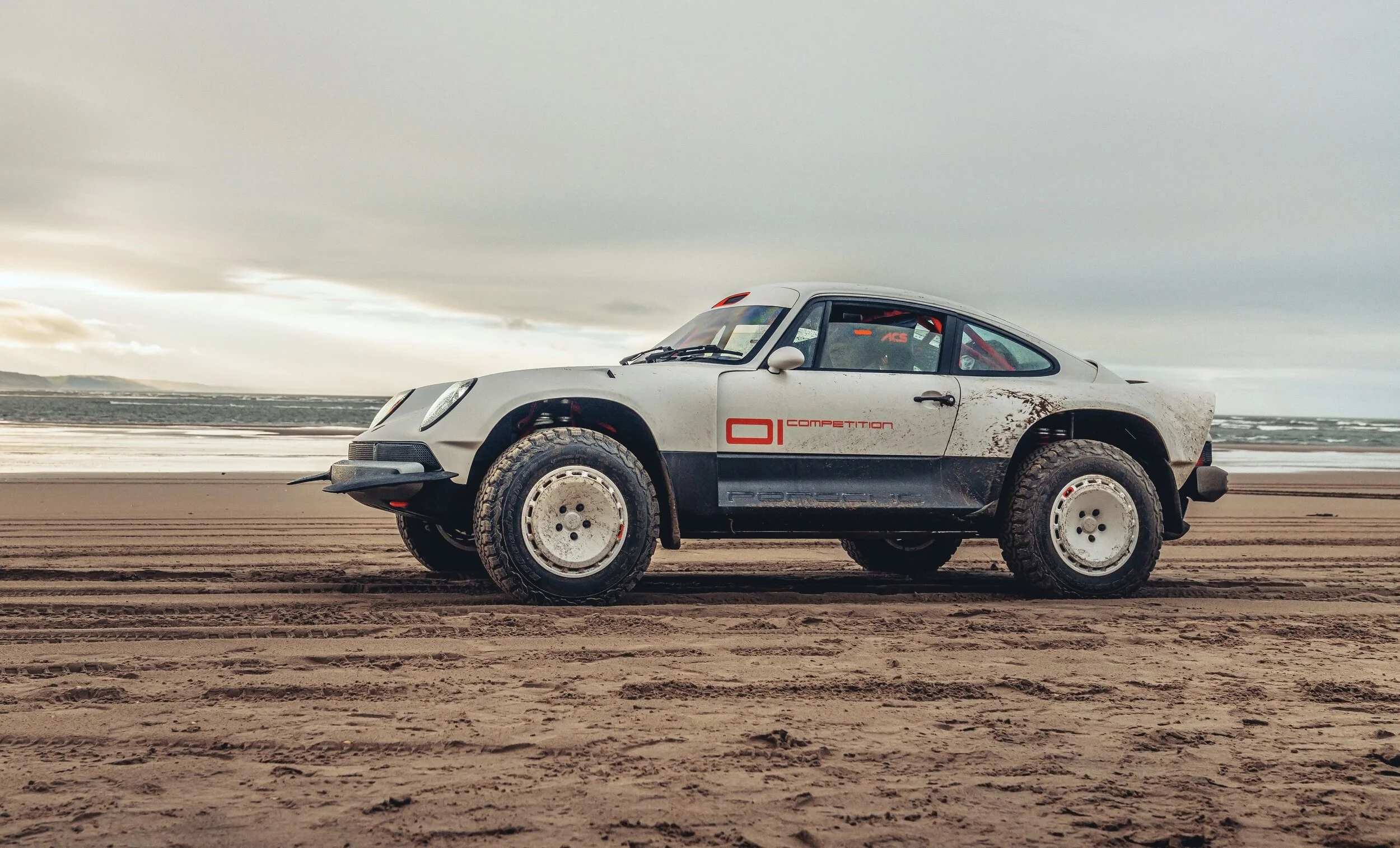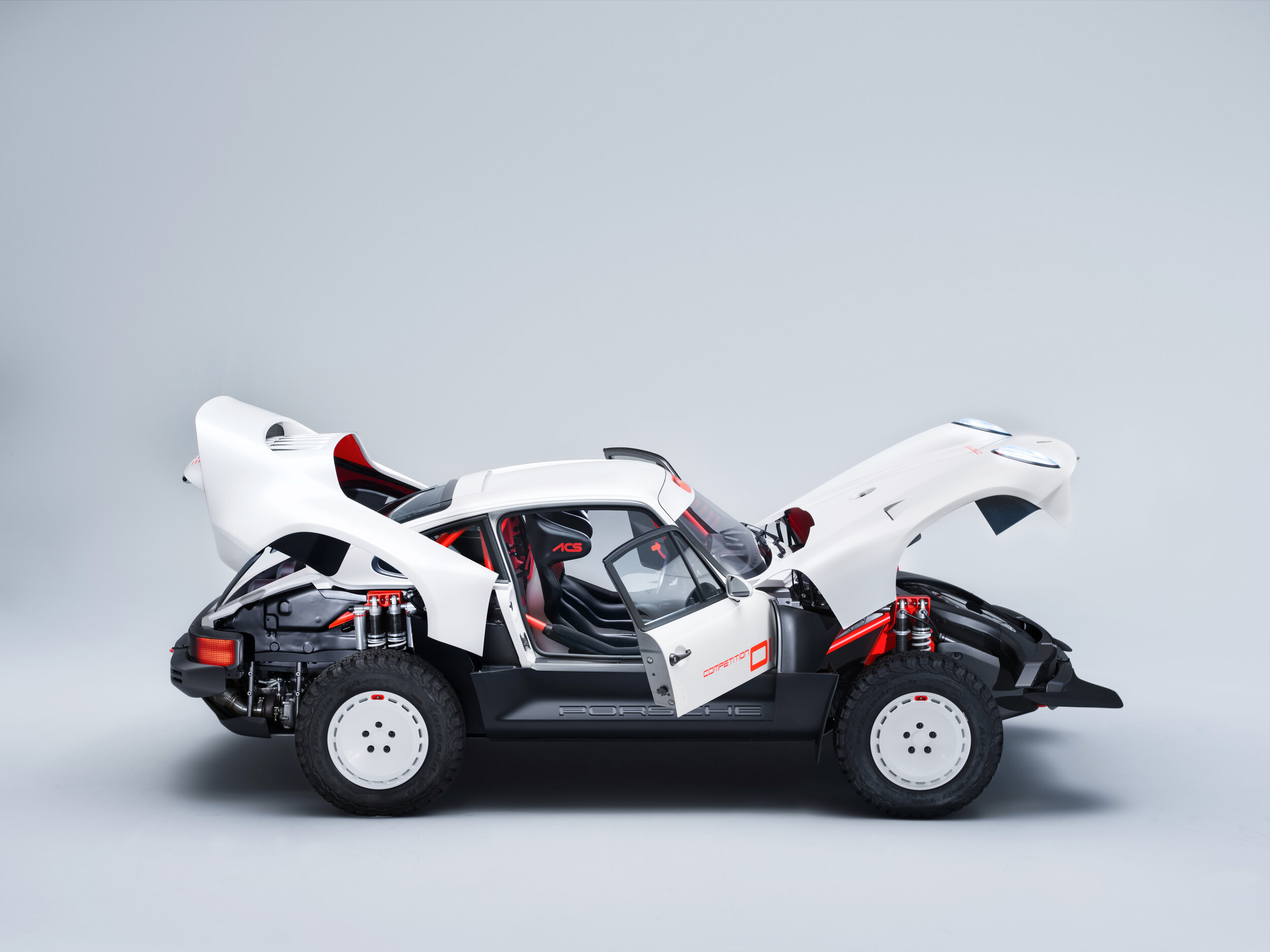Mustang Mach-E sorted for NZ
/Ford’s electric passenger model here from early next year
Read MoreFord’s electric passenger model here from early next year
Read More
Homage to history …. the Singer ACS takes inspiration from Porsche’s incredible 959 (below), a Group B rally machine that made huge imprint in the Paris-Dakar rallies in the 1980s.

PICTURE this: A Porsche 911 with extensive off-road modifications and a highly-tuned engine banging out mammoth horsepower, capable of surviving in the toughest terrain.
The brand did exactly that back in the 1980s, when creating the berserk 959, a car originally developed as a Group B world rally championship car – which, when that was kyboshed, proved particularly useful in hard-out long-distance desert racing ‘raids’, particularly the Paris-Dakar in the days when it was actually that. The 959 subsequently also rendered in a limited-run road car form and is now a highly-prized collectible.
Now California-based Singer has revealed its latest creations: a pair of all-terrain models offering a 2021 interpretation of the famous factory model.
The Singer ACS (which stands for All-terrain Competition Study) consists of a pair of rally-prepped machines that take inspiration from the 959 as well as the 911 SC/RS that Porsche also rallied.
Commissioned by one of Singer’s long-term clients, ACS has been co-developed in the United Kingdom by Richard Tuthill, whose operation specialises in motorsport and rally preparation for classic Porsches.
Last year, Tuthill Porsche constructed the car that won the 2019 East African Safari Classic - a 5000km event that runs through Kenya and Tanzania. Back in the 1980s, Tuthill partnered with Prodrive to develop the original World Rally-prepped 911 SC/RS.
Two cars have been built: the first, white car seen today is adapted for “high-speed desert rallying” while a second, lower-slung, car is designed for tarmac rallying.
Both remind that, while is Singer is often touted as a restoration specialist, it really often goes well beyond that role and reaches well into total re-engineering.

The ACS cars are exemplars of that. AS is almost always the case qwith Singers, the starting point is a 1990 964-generation 911, which is reskinned in a carbon fibre body.
However, as the wild looks suggest, these are unique to the ACS and are designed for two main purposes, says British website AutoExpress, which has gained access to the project.
The on-line edition says the body rework takes into account the increased cooling demands required in harsh off-road environments. It allow easy access to important mechanical components which may need to be examined during service stops. As a result, the entire front and rear sections both open up like huge clamshells.
The panels wrap around an extensively reinforced monocoque, and one which accommodates a significantly raised ride height. Bumpers front and rear are simple bars, which enable even greater approach and departure angles.
Tough rally-spec suspension is then attached to the bulked-up chassis. Twin dampers - each five-way adjustable - are mounted at all four corners, in order to control the shocks endured by the new long-travel suspension. Contact to the ground is through chunky BF-Goodrich all-terrain tyres, wrapped around 8x16” forged aluminium wheels. Brakes discs are steel, and are gripped by four piston calipers all round.
Porsche’s ‘Metzger’ flat six remains Singer’s start point for the engine, but its configuration here is new. Capacity is 3.6-litres, but it’s boosted by a pair of intercooler-fed turbochargers. Total power can be adjusted based on the demands of the specific rally, but the new unit offers at least 355kW and 569Nm of torque.
Drive is sent to all four wheels via front, centre and rear limited slip differentials, and a five-speed sequential dog-box, which allows the driver to shift up without lifting the throttle. The gears can be operated through either an extended gear lever on the transmission tunnel, or by steering wheel-mounted paddles.
Other modifications to the standard Singer formula include a long range fuel tank and two full size spare wheels.
Inside, the ACS sports a much more contemporary appearance than Singer’s retro-inspired road cars, Auto Express says.

Accessed through shorter doors (a result of the significantly reinforced sill area) the cabin reveals a pared-back dashboard, constructed from carbon fibre. This houses a digital instrument panel in front of the driver, and a huge GPS race navigation system ahead of the passenger.
Many of the controls are housed on a unique steering wheel, while a huge hydraulic handbrake stands taller than the extended gear lever. Safety is provided by unique seats, harnesses and a roll cage - all certified by motorsport’s governing body, the FIA. Both driver and passenger benefit from their own in-built drinks system.
Price? No-one’s gone into that and likely as not, you’ll never know. Just settle on “a lot … and then some.”
MotoringNZ reviews new cars and keeps readers up-to-date with the latest developments on the auto industry. All the major brands are represented. The site is owned and edited by New Zealand motoring journalist Richard Bosselman.